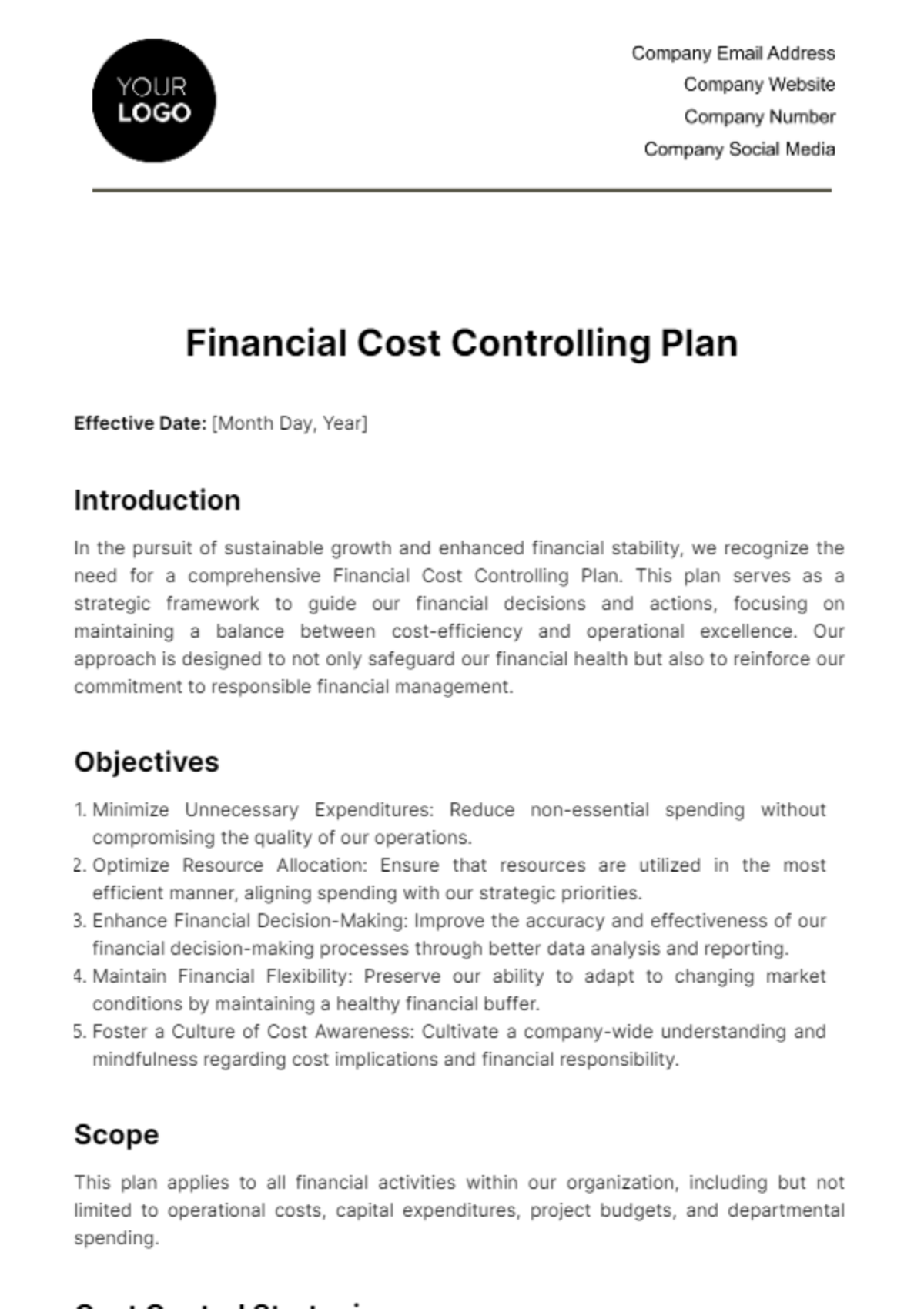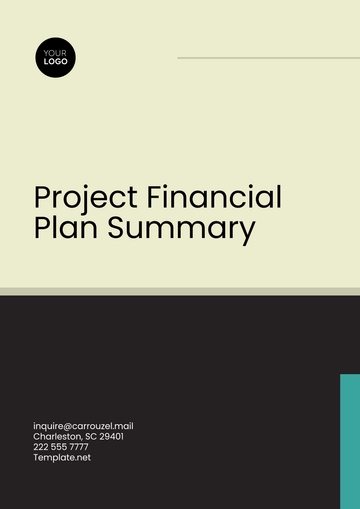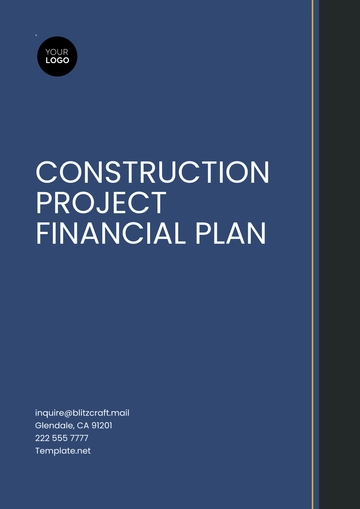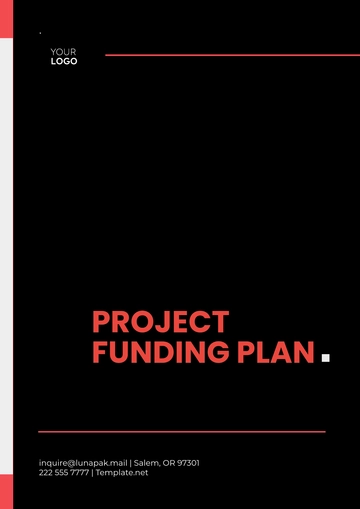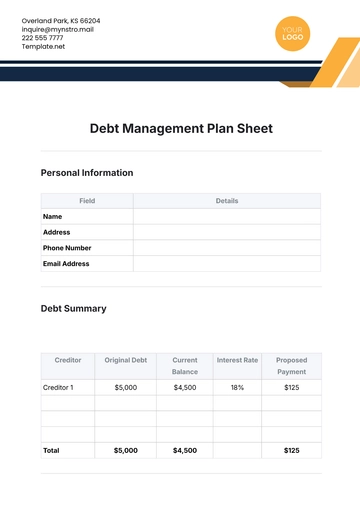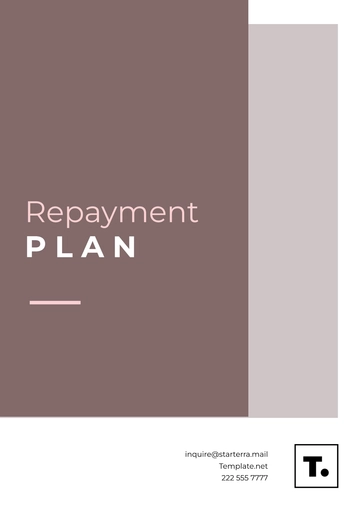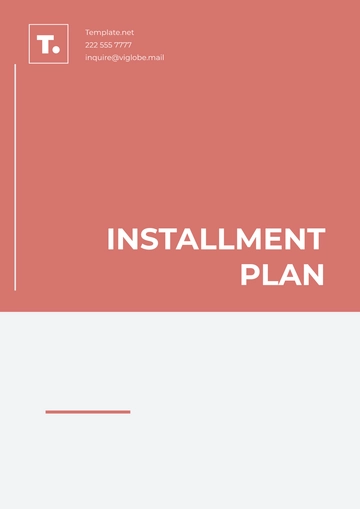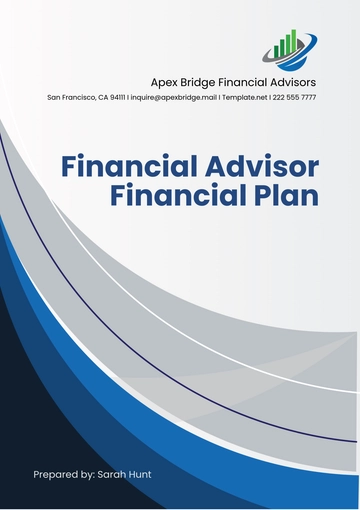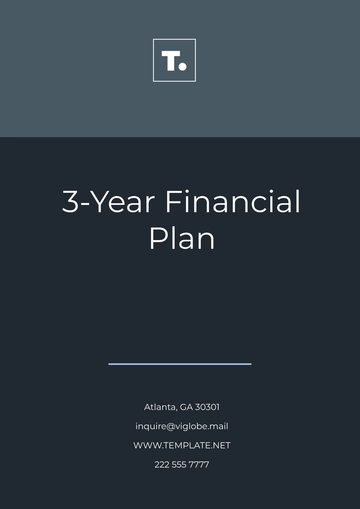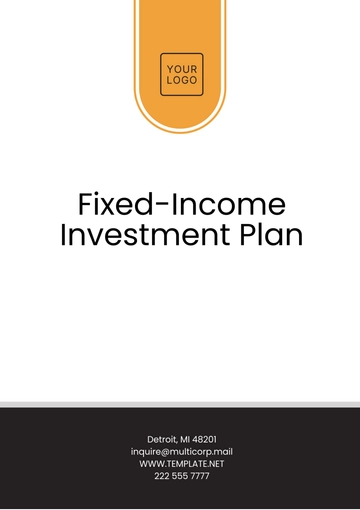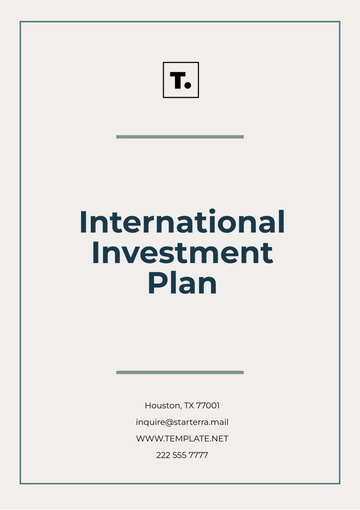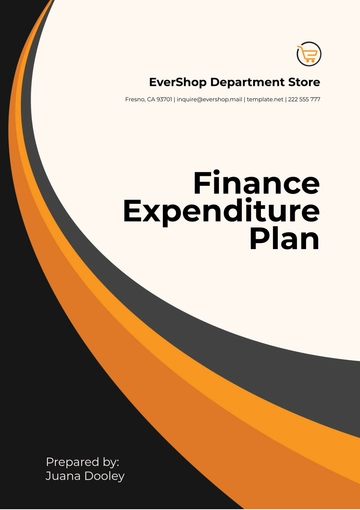Financial Cost Controlling Plan
Effective Date: [Month Day, Year]
Introduction
In the pursuit of sustainable growth and enhanced financial stability, we recognize the need for a comprehensive Financial Cost Controlling Plan. This plan serves as a strategic framework to guide our financial decisions and actions, focusing on maintaining a balance between cost-efficiency and operational excellence. Our approach is designed to not only safeguard our financial health but also to reinforce our commitment to responsible financial management.
Objectives
Minimize Unnecessary Expenditures: Reduce non-essential spending without compromising the quality of our operations.
Optimize Resource Allocation: Ensure that resources are utilized in the most efficient manner, aligning spending with our strategic priorities.
Enhance Financial Decision-Making: Improve the accuracy and effectiveness of our financial decision-making processes through better data analysis and reporting.
Maintain Financial Flexibility: Preserve our ability to adapt to changing market conditions by maintaining a healthy financial buffer.
Foster a Culture of Cost Awareness: Cultivate a company-wide understanding and mindfulness regarding cost implications and financial responsibility.
Scope
This plan applies to all financial activities within our organization, including but not limited to operational costs, capital expenditures, project budgets, and departmental spending.
Cost Control Strategies
Budget Management
Implement a zero-based budgeting approach, requiring justification for each budget item annually, rather than carrying over previous budgets.
Set a company-wide budget reduction target of 5% for the next fiscal year, focusing on discretionary spending areas.
Cost Monitoring and Reporting
Establish a monthly financial review meeting to analyze spending against the budget. Each department will present their financial performance, highlighting any variances.
Implement a cloud-based financial dashboard accessible to department heads, providing real-time insights into spending patterns.
Variance Analysis
Conduct a quarterly deep-dive analysis into any budget variances exceeding 10%. This will involve investigating the causes and developing strategies to address them.
Set a threshold of ±3% for acceptable budget variances for operational costs, ensuring tight control without hindering day-to-day activities.
Procurement Management
Centralize procurement processes to leverage bulk purchasing and negotiate better terms with suppliers, aiming to reduce procurement costs by 8%.
Introduce a vendor evaluation system to assess supplier performance and cost-effectiveness.
Resource Optimization
Conduct an annual audit of all major operational resources to identify underutilization or inefficiencies. For instance, reducing energy costs by optimizing equipment usage.
Encourage cross-departmental resource sharing to maximize the utility of assets and reduce the need for new purchases.
Roles and Responsibilities
Role | Responsibility |
Chief Financial Officer | Oversee the overall cost control strategy and ensure alignment with organizational goals. |
Department Heads | Monitor and manage departmental budgets, approve expenses, and report on financial performance. |
Procurement Team | Implement procurement strategies, negotiate with suppliers, and manage vendor relationships. |
Finance Team | Conduct regular financial analyses, prepare variance reports, and provide recommendations for adjustments. |
All Employees | Adhere to budget guidelines and report any financial discrepancies or opportunities for savings. |
Cost Control Tools and Techniques
Financial Software Systems: Utilize advanced financial software for real-time tracking of expenditures and budget performance.
Cost-Benefit Analysis: Regularly conduct cost-benefit analyses for major expenditures to ensure they align with strategic objectives.
Key Performance Indicators (KPIs): Implement financial KPIs to measure and evaluate the effectiveness of cost control measures.
Training and Development
Audience | Training Topic | Frequency |
Department Heads | Budget Management and Financial Reporting | Annually |
Procurement Team | Strategic Sourcing and Vendor Management | Biannually |
All Employees | Cost Awareness and Expense Reporting Procedures | As Needed |
Finance Team | Advanced Financial Analysis and Forecasting | Quarterly |
Review and Adjustment Mechanism
Quarterly Reviews: Conduct quarterly reviews of the financial performance against the budget, making adjustments as necessary.
Annual Plan Revision: Annually revise the cost controlling plan based on the previous year's outcomes and changing organizational needs.
Feedback Mechanism: Implement a feedback mechanism to gather insights from employees on the effectiveness of cost control measures.
Compliance and Enforcement
Regular Audits: Schedule regular internal audits to ensure adherence to cost control policies and procedures.
Non-Compliance Consequences: Establish clear consequences for non-compliance with cost control measures.
Continuous Improvement: Encourage continuous improvement by revising cost control strategies based on audit findings and employee feedback.
Communication Plan
Audience | Communication Method | Content | Frequency |
All Employees | Email Updates and Intranet Announcements | Policy Changes, Reminders, Success Stories | Monthly |
Department Heads | Financial Review Meetings | Budget Performance, Variance Analysis | Monthly |
Finance Team | Workshops and Training Sessions | New Tools, Techniques, Best Practices | Quarterly |
Procurement Team | Vendor Management Updates | Vendor Performance, Negotiation Outcomes | Biannually |
Prepared By: [Name]
Date: [Month Day, Year]
Finance Templates @ Template.net
